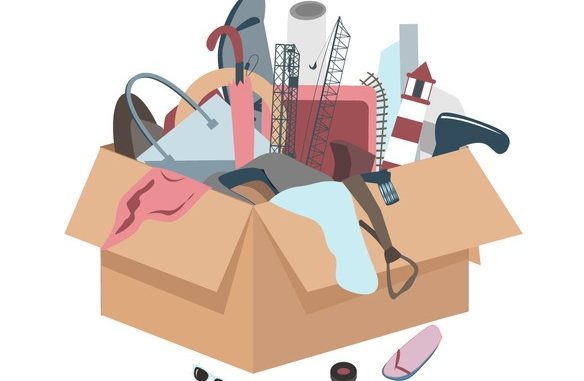
If you had to put a figure on it, how much stuff is in your house? Susannah Butter looks into decluttering – and insists you have to include clothes, even if you bought them on ASOS after a few glasses of wine and are planning to send them back once you’ve found the receipts!
CREDIT: This is an edited version of an article that originally appeared on Evening Standard
Decluttering guru Mary Lambert says we only need 100 items and, once we cull our stuff, we will be happier, calmer and more successful. Great – except hasn’t she missed off a few zeros? The average household has 300,000 items.
The 100 things shtick comes from American entrepreneur Dave Bruno who says you can ‘be more with less’. Every time he tidied up his house in San Diego he found that the problem wasn’t that he was messy but that he had nowhere left to put things.
Mary acknowledges that whittling everything down to 100 items is no mean feat, and suggests tackling it over a period of seven months. She allows you to group items together — tights, for example, can count as one — and you can make one exception for a category of things that you particularly love. For her, it’s jewellery; having a lot of bangles and earrings gives her so much joy that she doesn’t include these in her 100 items. Crockery doesn’t count, nor do food and drink (so my collection of spirits is allowed, phew), or cleaning materials, tools or bed linen.
Mary starts with searching questionnaires to determine how reliant on your possessions you are. Most of the qustions are about whether you feel lost without having everything you could possibly need with you at all times and what your ‘clutter culprits’ are (often things like sports equipment).
Some areas are easier than others
Her solutions include being patient, making lists of what you have and need to keep and, if you feel ashamed of how much you’ve spent on items you don’t use, changing your focus — Mary stresses how good it feels to give to charity shops, and how grateful friends may be for your cast-offs.
Inevitably, some areas are easier than others; clearing out the hall cupboard was a breeze — there is satisfaction in jettisoning junk mail and broken umbrellas – but old cards and photographs are harder to bin. Mary advises making a memory box to contain your sentimentality. If space is limited you have to be selective.
Thinking about the Swedish concept of ‘dostadning’, or ‘death cleaning’ – where you throw out what you don’t need to save your family the burden of doing it after you’ve gone – could help. That postcard a friend sent you three years ago? It was funny then but now it’s just another thing someone else will have to sort through one day.
Keep it or chuck it? A tidy guide
- Decide what you are going to write down as individual items, and what counts as a group — bags, shoes or socks can count as one, but you can’t have too many categories, that’s cheating.
- Divide belongings into categories and set deadlines for throwing them away — e.g. all clothes by next month, electronics the month after, sports kit next. Allocate time slots for the task; do it hour-by-hour if that helps.
- List it all. If you struggle with decisions enlist the help of an honest friend and think about whether others would get more joy out of your stuff than you. Store borderline items in your loft before making the final call — if you find you really miss them, you can keep them.
- Don’t try to cull personal items, such as letters and photos, if you are feeling tired or vulnerable. If you’re hoarding old magazines why not just cut out the articles you want to keep?
- Identify clutter blackspots — desks, hallways, bathroom cabinets, under the stairs. Just because items are in a box on top of a cupboard, they haven’t gone away
- You can still buy things, but consider this – would you be happier spending the money on an experience?
Decluttering your space will help you declutter your mind. Follow these tips and you should be on your way to a tidier house and a clearer head.
Don’t forget to follow us on Twitter, like us on Facebook, or connect with us on LinkedIn!

Be the first to comment